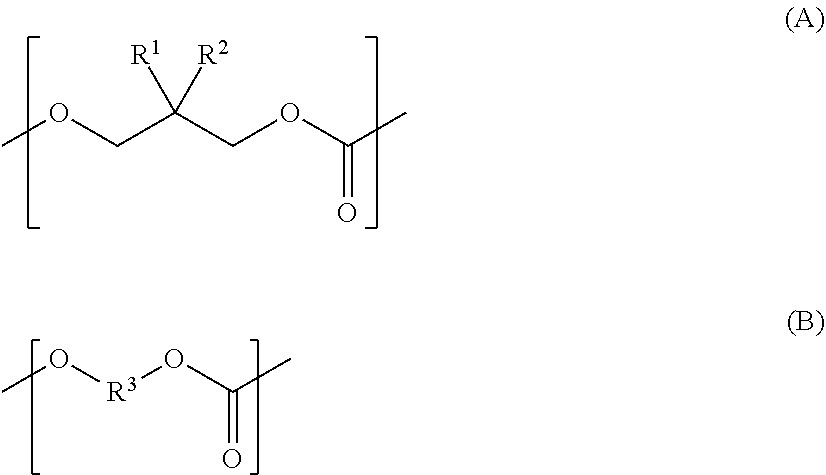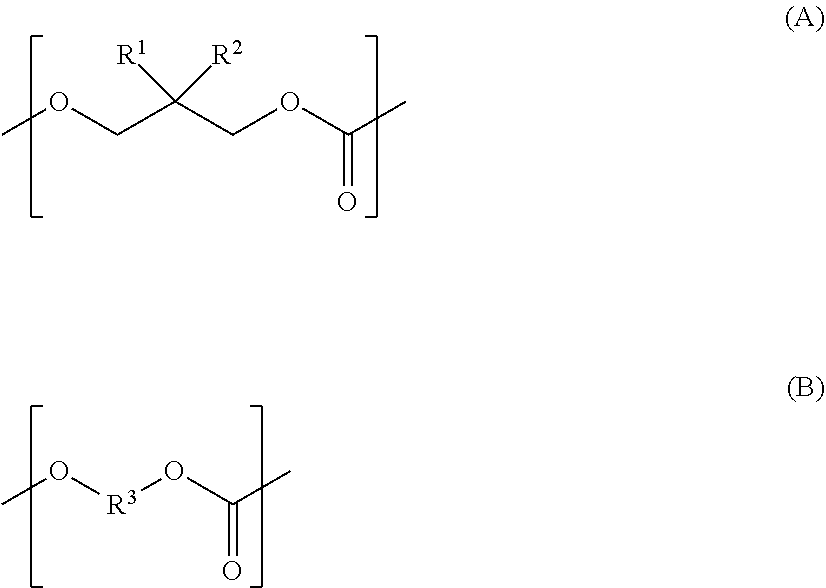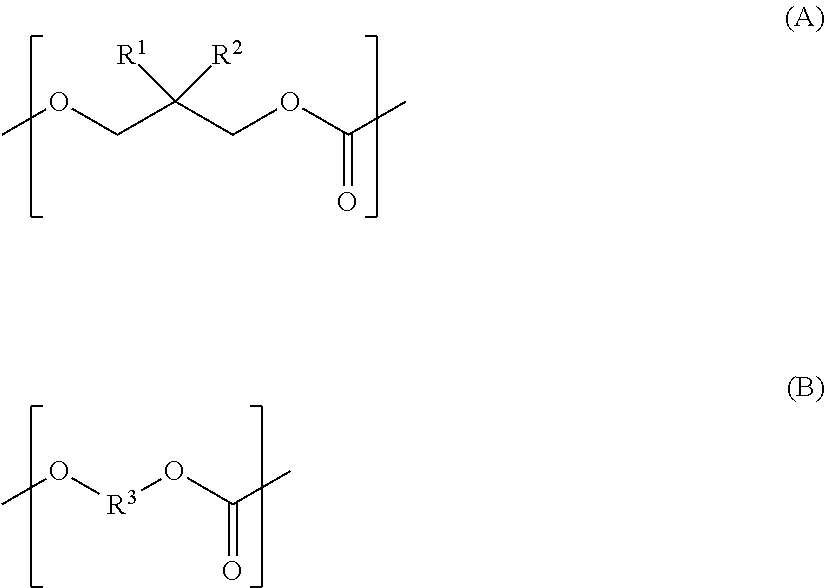Polycarbonate diol, polycarbonate diol-containing composition, polycarbonate diol production method, and polyurethane
- Summary
- Abstract
- Description
- Claims
- Application Information
AI Technical Summary
Benefits of technology
Problems solved by technology
Method used
Image
Examples
example 1-1
[0298]To a 5-L glass separable flask equipped with a stirrer, a distillate trap and a pressure adjusting device, 1,167.5 g of 1,4-butanediol (14BD), 86.1 g of neopentyl glycol (NPG), 2,746.4 g of diphenyl carbonate(DPC) and 7.0 mL of an aqueous magnesium acetate tetrahydrate solution (concentration: 8.4 g / L, magnesium acetate tetrahydrate: 59 mg) were added, followed by purging with nitrogen gas. The contents were heat-dissolved by raising the internal temperature to 160° C. with stirring. Subsequently, after the pressure was reduced to 24 kPa over a period of 2 minutes, the reaction was allowed to proceed for 90 minutes while removing phenol out of the system. Then, the reaction was continued while reducing the pressure to 9.3 kPa over a period of 90 minutes and further to 0.7 kPa over a period of 30 minutes, after which the temperature was raised to 170° C. and the reaction was allowed to proceed for another 60 minutes while removing phenol and unreacted diol out of the system, wh...
example 2-1
[0302]A polycarbonate diol was obtained in the same manner as in Example 1-1 except that, in the production of the polycarbonate diol, the raw materials were changed to 926.9 g of 1,4-butanediol (14BD), 13.0 g of neopentyl glycol (NPG), 2,060.1 g of diphenyl carbonate (DPC), and 5.3 mL of an aqueous magnesium acetate tetrahydrate solution. The results of evaluating the characteristics and physical properties of the thus obtained polycarbonate diol are shown in Table 2.
[0303]The thus obtained polycarbonate diol-containing composition had a hydroxyaryl compound content of 100 ppm by weight or less.
example 3-1
[0304]A polycarbonate diol was obtained in the same manner as in Example 1-1 except that, in the production of the polycarbonate diol, the raw materials were changed to 908.2 g of 1,4-butanediol (14BD), 26.9 g of neopentyl glycol (NPG), 2,064.9 g of diphenyl carbonate (DPC), and 5.3 mL of an aqueous magnesium acetate tetrahydrate solution. The results of evaluating the characteristics and physical properties of the thus obtained polycarbonate diol are shown in Table 2.
[0305]The thus obtained polycarbonate diol-containing composition had a hydroxyaryl compound content of 100 ppm by weight or less.
PUM
| Property | Measurement | Unit |
|---|---|---|
| Fraction | aaaaa | aaaaa |
| Percent by mass | aaaaa | aaaaa |
| Percent by mass | aaaaa | aaaaa |
Abstract
Description
Claims
Application Information
 Login to View More
Login to View More - R&D
- Intellectual Property
- Life Sciences
- Materials
- Tech Scout
- Unparalleled Data Quality
- Higher Quality Content
- 60% Fewer Hallucinations
Browse by: Latest US Patents, China's latest patents, Technical Efficacy Thesaurus, Application Domain, Technology Topic, Popular Technical Reports.
© 2025 PatSnap. All rights reserved.Legal|Privacy policy|Modern Slavery Act Transparency Statement|Sitemap|About US| Contact US: help@patsnap.com



